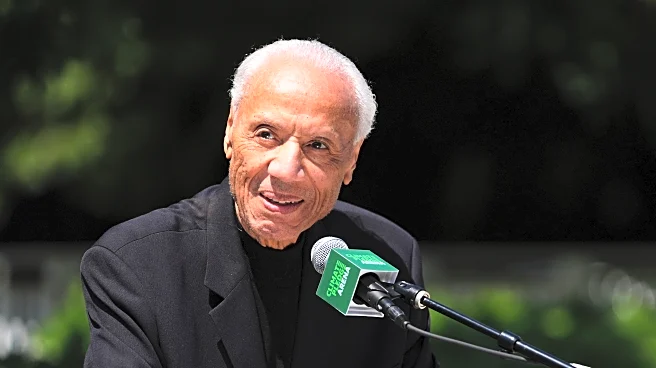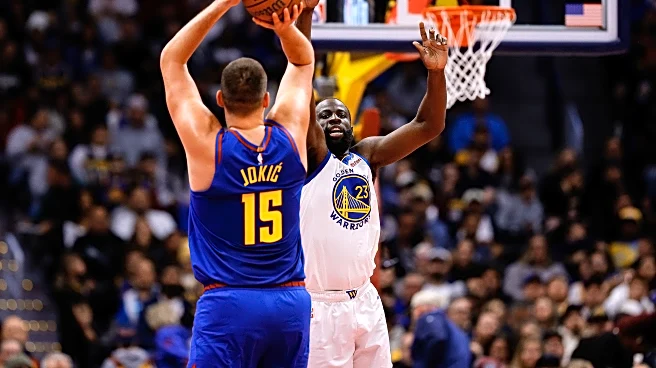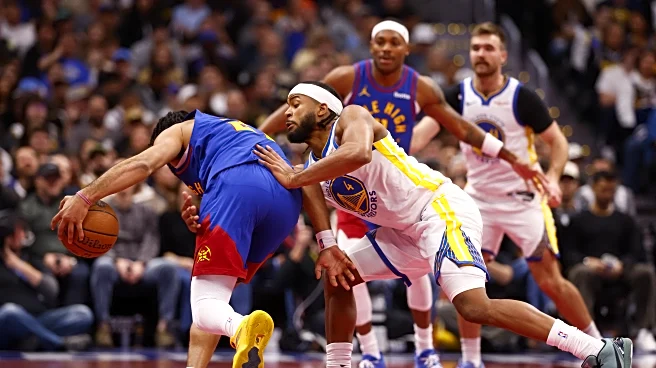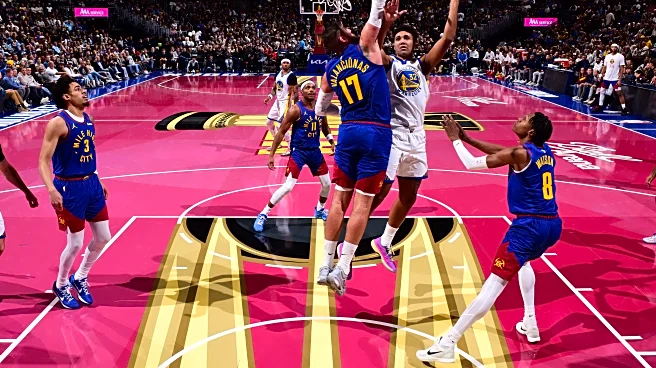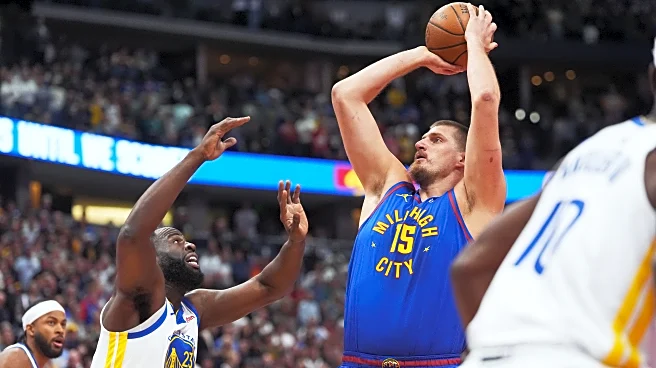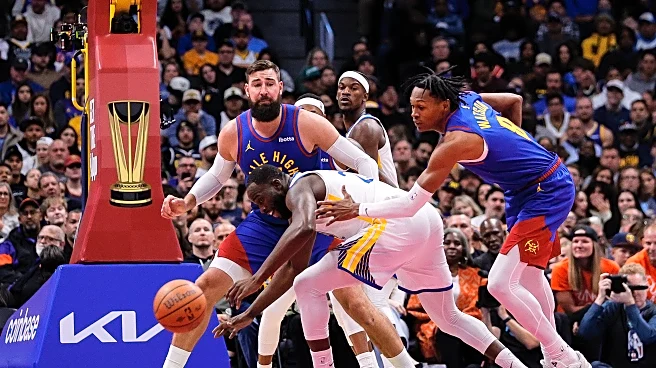During the Golden State Warriors’ yearly scheduled trip to Atlanta to face the Hawks last season, the ball was fed to the low post as the second half of the contest had just begun, with the Warriors trailing by 12 points. An entry pass to the low post typically signals an intent to run their signature half-court set: the low-post split action, whose recipients have traditionally been their best shooters — often, in the form of Steph Curry and other relatively diminutive guards. In running this action that
was once deemed uncommon and unconventional, the Warriors’ use of guards as its recipients — along with their insistence on using it amidst the widespread familiarity (and in some cases, imitation) that opposing teams have developed — has made it much easier for opponents to expect it. However, despite how telegraphed it has become, it still retains a respectable level of effectiveness, mainly due to how Curry continues to bend defenses at this stage of his career.
Which is why, going back to the possession aforementioned above, a curious wrinkle was encountered by the Hawks. After feeding the ball to the low post, the Warriors don’t set a screen for Curry — in fact, Curry is nowhere near the meat of the action, mainly because he sat this game out. Instead, the split action is run for what seems to be Brandin Podziemski. However, Draymond Green motions to Podziemski to clear to the other side; the action isn’t for him.
Instead, it’s for the seven-foot Quinten Post:

The concept of running split action for your seven-foot center — one who shot 40.8% on 9.5 three-point attempts per 75 possessions last season — is an incredible luxury to have, one that Steve Kerr and the Warriors previously didn’t have prior to acquiring Post in the 2024 NBA Draft. But having that luxury has allowed Kerr to play around with his configurations on offense, including split action, which traditionally has had the likes of Post set the split action screen.
Setting screens for Post hasn’t been limited to split-action situations. In their opening set against the Indiana Pacers, the Warriors had Jimmy Butler set a pin-in screen for Post, in an effort to get the big man going while taking advantage of a Pacers defense that seemingly wasn’t all too concerned with guarding Post out on the perimeter.

While the shot from Post missed, it was a good look that was created by the Butler pin-in. Take note that Butler initially screens his own man, before making sure to get a piece of Isaiah Jackson on his late close-out toward Post. The late close-out by Jackson is a microcosm of how big-man defenders are often unaccustomed to closing out on shooters, let alone shooters that are as big or nearly as big as they are.
Besides Post, the common denominator in both possessions above: Butler. He was the low-post passer in split action for Post, while Butler was responsible for getting Post open with his pin-in screen. Butler’s value has often been debated among several circles, including the Warriors fanbase, who have looked at his contract expecting Butler to be the kind of supplementary scorer behind Curry who self-creates buckets in bunches. While Butler certainly can turn the scoring switch on whenever he has to, he has chosen to pick his spots in that regard. Instead, Butler, for the most part, chooses to be a high-level connector and playmaker who enjoys creating open shots for his teammates. That can understandably be frustrating for fans who want to see him embrace a more aggressive role, especially in moments where Curry is on the bench or is sidelined with an injury (or illness).
But Butler’s seemingly selfish desire to preserve himself belies the selfless manner through which he sets his teammates up, most notably his stretch centers. Post has been a beneficiary of Butler’s playmaking, advantage creation, and screening during their brief time together as teammates. Even when Post misses the look above, Butler makes sure that Post touches the ball again the next time around, which pays dividends when Post finally drills the three (with help from Podziemski setting a screen on an unsuspecting Jay Huff — again, by virtue of being a big man, unaccustomed to the nuances of close-outs and screen navigation):

Unbeknownst to everyone not privy to Butler and the Warriors’ state of mind, these possessions of setting up Post to capture a three-point rhythm were precursors for setting up the Warriors’ other stretch five — one who has more mileage on his proverbial treads and has struggled to capture his rhythm from beyond the arc, shooting an ice-cold 20.8% on threes prior to their game against the Pacers.
As such, in a similar manner through which Post was the recipient of the split action above, take note how Kerr drew up this variant of split action (called “Gaggle” action) for Al Horford, who sorely needed to establish his three-point shot that was, for the most part, absent since hitting big shots against the Denver Nuggets at Chase Center. Again, with Horford’s defender being a big man unaccustomed to chasing perimeter shooters, Horford is given ample time (courtesy of a Podziemski screen) to line up his shot — but misses:

But Butler refuses to give up on his attempts to get Horford going, especially when Horford had already made one three in a previous first-quarter possession, courtesy of Butler drawing help on a left-block paint touch. With Tony Bradley sinking in ever so slightly to discourage Butler from scoring in the paint, it triggers the automatic kick-out to Horford in the corner:

Furthermore, it is of no coincidence that Butler has been surrounded by as much shooters as possible in bench lineups, especially during the latter portion of first quarters during which he is the main offensive threat and designated advantage creator.
Butler is a master of sensing the very moment an additional defender helps off of their assignment and subsequently whizzing a pass during that momentary window to create shots for his teammates. Horford happened to be a very fortunate beneficiary of Butler’s reads against the Pacers’ help defense — and it came at a fortunate time of need for the career 37% distance shooter.

It’s of no coincidence that of Horford’s 15 made field goals this season, seven of them have been from passes by Butler, his most prolific assist man so far, per PBP Stats. Butler has made it his personal mission to get Horford — once a fierce nemesis during their playoff battles against each other in the Eastern Conference — going. An in-rhythm Horford will only add to a floor that already has to make way for the gravitational pull of Curry, allowing Horford and others the space to make and finish plays. The Warriors have already experimented with Curry and Horford link ups via pick-and-pop possessions. It’s easy to envision the two of them creating good offense through a variety of other means, such as Horford screening for a guard off the ball, or coming off of an inverted pindown or pin-in screen, as he does below with Podziemski being the screen setter. Curry slotting into Podziemski’s role isn’t something to be counted out:

Butler has developed a sort of “sub-identity” or “sub-role” in this team that he has fully embraced: as somewhat of a stretch-five whisperer who almost always looks for either Horford or Post as a passing target out on the perimeter. It’s no surprise that, just like with Horford, Butler is Post’s most prolific assist man (six of Post’s 26 field goals have been assists from Butler, tied with Curry).
“Jimmy right away made it a clear point to look for me,” Horford said after the Warriors’ win over the Pacers. “There were a few times he had (open) layups (but) he was looking to kick it out and encouraging me to shoot the ball. The passes were there, they were on the money. I credit a lot of that to him, to kind of get me going offensively.”
Was that as purposeful on Butler’s part?
“Very, very purposeful,” Butler said. “As great of screens as he sets for me and protecting everybody at the rim, making all the right plays, it’s only right whenever he’s open (that) he gets the ball every single time. I’ll tell him, ‘When I got the ball at the top, I’ll jump over and skip it to you every single time in the corner, so just be ready to shoot it.‘ I’m glad he got to see the ball go in.”







